The University of North Carolina
CHEMISTRY

Article Collection

Elements of Change
We’re excited to share our first collection of recent articles from the UNC Chemistry Department articles that highlight work reflecting not only the cutting-edge science happening in the chemistry labs at Carolina, but also the spirit of curiosity and innovation that connects us all as members of this community As members of the department, you helped shape the foundation of this department, and we hope you’ll take pride in seeing how that legacy continues to grow From advances in resource depletion, pollution remediation, and circular chemistry solutions, these publications represent a current glimpse of the impactful work being done here today. We invite you to explore these topics and connect with the vibrant research culture that continues to benefit from your enduring contributions

Contributin

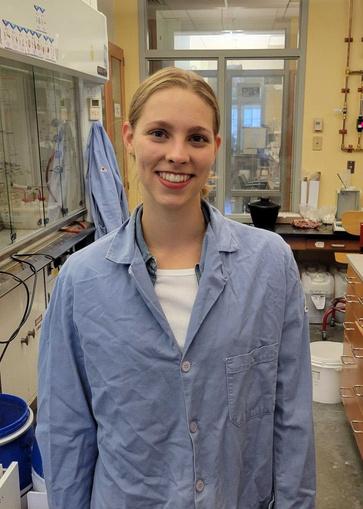


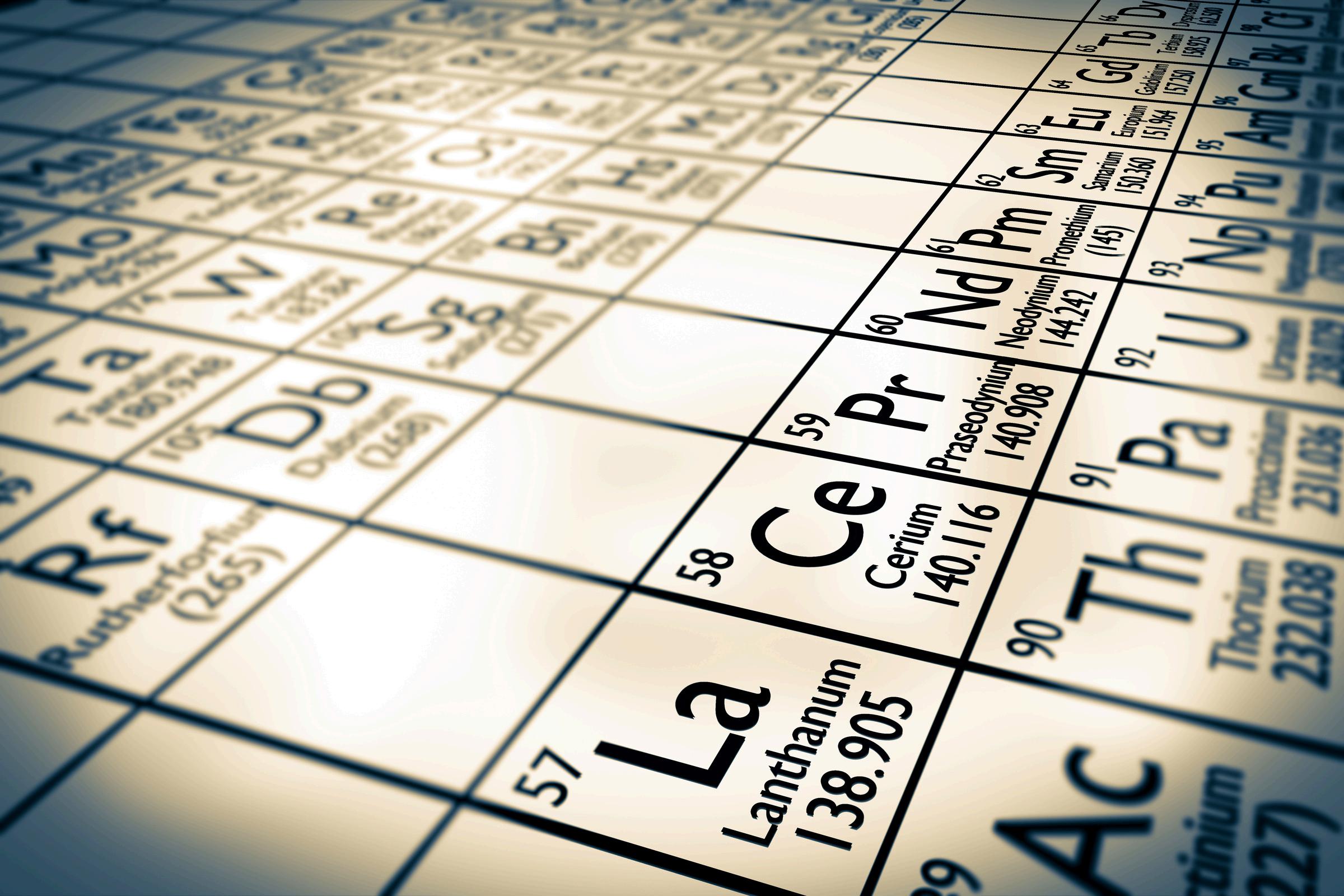
Rareearthelements,alsoknownaslanthanides, areessentialformoderntechnologyandusedin everythingfromsmartphonestoelectricvehicles A teamofUNCChemistryprofessorshasdesigned “smart”polymersthatcanselectivelyextractthese valuableelementsfromsolutionsandcouldpave thewayforamoresustainableandcost-effective waytoobtainthesecrucialmaterials
The team leveraged the properties of stimuliresponsive polymers, which change in response to external factors like temperature, to engineer materials to bind with lanthanides and then aggregate, forming large particulates that are easy to separate The addition of hydrophobic components in the polymer also aids in the separation process by conferring a protein-like structure and influencing how the polymer interacts with metal ions
By adjusting the amount of the hydrophobic component, the researchers could fine-tune how well the polymer extracted lanthanides from a solution The polymer works by first binding to the lanthanide ions in water and, over time, aggregates with other polymers bound to metal, forming clumps that are enriched in lanthanides This solid polymer-lanthanide complex can then be removed from the solution to efficiently recover the metal ions The material, after releasing the lanthanides, can even be reused for additional collection



“To measure how well our polymer worked, we used a special dye that changes color when it binds to lanthanides,” said Supraja Chittari, the paper ’ s lead author and a Ph D candidate in Chemistry “Our experiments found that increasing the hydrophobic component of the polymer improved its ability to extract lanthanides Additionally, the polymer showed metal selectivity, meaning it captured lanthanides while ignoring other common metal ions like calcium ”
This research is an important step toward developing cost-effective, sustainable methods for extracting rare earth elements By fine-tuning polymer design, scientists can create materials that work more efficiently and selectively. Future research may explore how different polymer structures affect extraction or how these materials can be scaled up for industrial use
“The ability to engineer responsive polymers for metal sequestration opens new possibilities not just for rare earth elements but for many other critical materials needed in technology and medicine,” said Dr Knight “With continued advancements, these polymers could revolutionize how we obtain and recycle valuable resources, making modern technology more sustainable.”
Unlocking the Secrets of Ancient Atmospheres
How Sulfur Compounds Shaped Early Earth

For scientists studying the origins of life and the evolution of planetary climates, understanding atmospheric aerosols is essential These tiny particles, suspended in the air, influence climate, surface conditions and even the potential habitability of planets A recent ACS Earth and Space Chemistry study, “Chemical
Characterization of Organosulfur Compounds in Aerosols from Archean Analog
Photochemistry: Insights from Liquid Chromatography and High-Resolution
Tandem Mass Spectrometry,” sheds new light on a key component of ancient atmospheric chemistry: organosulfur compounds
Aerosols play a critical role in regulating temperature, blocking harmful ultraviolet radiation and affecting cloud formation They can be composed of both inorganic and organic compounds, originating from gases like methane, carbon dioxide, nitrogen and sulfur gases, such as hydrogen sulfide and sulfur dioxide When these gases undergo chemical reactions triggered by sunlight, they form aerosols that may have influenced the early Earth’s climate and possibly even the emergence of life.


Recent research has indicated that hydrogen sulfide significantly contributes to organic aerosol production, potentially through the formation of organosulfur compounds However, until now, scientists lacked a detailed understanding of the molecular makeup of these compounds, leaving questions about their role in planetary evolution unanswered
To bridge this knowledge gap, Cade Christensen, a Ph D student at the University of North Carolina at Chapel Hill, and Dr Jason Surratt, a professor in the Department of Chemistry, conducted laboratory experiments that simulated atmospheric conditions on early Earth They exposed a mixture of gases 0 5% carbon dioxide; 0 1% methane; and 5 parts per million of hydrogen sulfide in a nitrogen background to ultraviolet light to mimic ancient atmospheric reactions The resulting aerosols were then analyzed using a sophisticated technique called hydrophilic interaction liquid chromatography coupled with high-resolution mass spectrometry This method allowed them to identify and characterize 60 different organosulfur compounds with remarkable precision Their analysis revealed that sulfur existed in multiple oxidation states, forming functional groups such as sulfates, sulfonic acids, sulfites, sulfinic acids and thiols Five specific compounds methyl sulfate, ethyl sulfate, methane sulfonic acid, ethane sulfonic acid and isethionic acid accounted for 6 2% to 7 9% of the total aerosol mass, highlighting their potential significance in the Archean sulfur cycle, which refers to the movement of sulfur through the Earth’s systems during the Archean eon, a very early geological era characterized by a largely oxygen-poor atmosphere.
“Our findings suggest that organosulfur compounds played a more substantial role in early Earth’s atmospheric chemistry than previously thought,” said Christensen. “These compounds could have influenced climate patterns, cloud formation and even the chemical processes leading to life’s origins ”
Beyond Earth, this research has implications for the study of other planetary bodies Many scientists are investigating the atmosphere of planets and moons, such as Jupiter, Saturn and Titan, as well as exoplanets outside Earth’s solar system Understanding the role of organosulfur compounds in these environments could provide critical insights into planetary evolution and habitability
“Our work represents the most detailed molecular characterization of organosulfur compounds in laboratorysimulated haze to date,” said Dr Surratt “Our findings pave the way for future studies exploring how these compounds interact with other atmospheric components and contribute to planetary climate systems By continuing to investigate the intricate chemistry of ancient atmospheres, we ’ re uncovering new pieces of the puzzle that explain how planets evolve and, perhaps, how life itself began ”
Researchers Identify Biomarkers for Diagnosis and Treatment of Threatened Sea Lion
The California coastline is a tapestry of natural beauty and ecological complexity, home to diverse marine life Among its most iconic residents are California sea lions (Zalophus californianus), playful and intelligent pinnipeds whose lives are intricately tied to the health of their marine ecosystem However, these animals face a growing threat from domoic acid toxicosis (DAT), a condition caused by a neurotoxin secreted by harmful algal blooms.
A recent study, “Proteomic and Lipidomic Plasma Evaluations Reveal Biomarkers for Domoic Acid Toxicosis in California Sea Lions,” co-authored by Dr Erin Baker, associate professor in the Department of Chemistry at UNC-Chapel Hill, and published in the Journal of Proteome Research, offers insights into the molecular underpinnings of DAT Using proteomic and lipidomic analyses, the researchers identified biomarkers that could change the diagnosis and treatment of this devastating condition
Domoic acid is produced by the marine diatom Pseudonitzschia, which proliferates during harmful algal blooms
Sea lions are exposed to the toxin through their diet, primarily by consuming anchovies and sardines that have accumulated domoic acid Once ingested, the toxin binds to glutamate receptors in the brain, causing neurological dysfunction such as seizures, ataxia and even fatal heart complications

“While severe cases of DAT are often evident through clinical signs, diagnosing mild or early-stage cases remains a challenge,” said Dr Baker “Domoic acid metabolizes rapidly, disappearing from the bloodstream within 24 hours, making traditional diagnostic methods like blood or urine tests unreliable ”
Dr Baker and her colleagues sought to address this diagnostic gap using a multiomics approach, analyzing both proteins (proteomics) and lipids (lipidomics) in the blood plasma of 31 sea lions 14 diagnosed with DAT and 17 with no evidence of the condition Their findings revealed molecular markers that could pave the way for rapid and accurate diagnosis.
The proteomic analysis identified 245 proteins, of which 31 showed statistically significant differences between DAT and non-DAT sea lions Notably, 19 of these proteins were decreased in the DAT group, including three apolipoproteins (APOE, APOC3 and APOB)
Apolipoproteins are critical for lipid transport in the blood, suggesting a link between protein dysregulation and lipid metabolism in DAT.
The lipidomic analysis detected 331 unique lipids, with 29 showing significant differences between the groups
Of these, 28 lipids, including 15 triglycerides, were found at lower levels in DAT-affected sea lions The researchers observed trends in fatty acid composition, with many of the affected lipids containing long-chain fatty acids and double bonds, hinting at enzymatic activity changes associated with DAT

AssociateProfessorErinBaker isco-authorofthestudy, whichpublishedintheJournal ofProteomeResearch


“The study’s findings hold promise for transforming how veterinarians diagnose and treat DAT,” said Dr Baker “The identified biomarkers particularly the apolipoproteins and triglycerides could form the basis of a blood panel assay, enabling rapid, cost-effective testing This approach would complement clinical observations, such as seizures, providing a more robust diagnostic framework ”
Such advancements are critical for facilities like The Marine Mammal Center in Sausalito, Calif , which has treated over 11,000 sea lions for DAT since 1998. Early and accurate diagnosis could allow for timely interventions, such as administering anti-seizure medications and supportive fluids, significantly improving survival rates.
“The rise in harmful algal blooms, driven by climate change and nutrient runoff, underscores the urgency of understanding and mitigating their impacts on marine ecosystems,” said Dr Baker “By shedding light on the molecular mechanisms of DAT, this study not only aids in the conservation of California sea lions but also contributes to broader efforts to protect marine biodiversity ”

Breakthrough Method Converts Carbon Dioxide into Sustainable Liquid Fuel


A team of scientists has developed a new way to turn carbon dioxide into methanol, a valuable liquid fuel with high energy density and versatility The study, “Room-Temperature Formate Ester Transfer Hydrogenation Enables an Electrochemical/Thermal Organometallic Cascade for Methanol Synthesis from CO2,” published in Angewandte Chemie, not only advances understanding of catalysis but also paves the way for renewable energy conversion and CO2, or carbon dioxide, valorization
The research team, which is part of the Department of Energy’s Center for Hybrid Approaches in Solar Energy to Liquid Fuels (CHASE), introduces a novel multi-catalyst system that operates at room temperature and normal atmospheric pressure conditions critical for integration with electric power obtained from renewable energy sources, such as solar and wind
Methanol has long been viewed as a key player in the push toward sustainable energy, with fuel applications ranging from IndyCar racing to maritime shipping Compatibility with combustion engines and fuel cells makes methanol a promising option for reducing reliance on fossil fuels; however, producing methanol from carbon dioxide is a longstanding challenge. Conventional methods rely on high temperatures, high pressures and hydrogen derived from fossil fuels factors that make them less sustainable and hard to integrate with renewable energy
“Our study tackles this challenge head-on, offering a method to synthesize methanol under conditions that could be coupled with renewable electricity,” said Dr Sergio Fernández, one of the authors of the study and a postdoctoral researcher in the Miller Group at UNCChapel Hill’s Department of Chemistry “This is a significant step forward in developing innovative strategies to transform CO2, a major greenhouse gas, into sustainable liquid fuels.”
The research team, which also included scientists from CHASE investigators at Yale University and Brookhaven National Laboratory, also found that isopropanol plays a crucial role beyond acting as a solvent It participates in the reactions by donating hydrogen and helps lower energy barriers through hydrogen bonding This dual functionality makes the process feasible under mild reaction conditions
“The impact of this research extends beyond energy storage Methanol is not just a fuel; it’s also a building block for producing a wide range of chemicals and materials,” said Dr Fernández
Moreover, the study demonstrates how to integrate two traditionally separate fields: electrochemical and thermal catalysis By harmonizing these methods, the team has set the stage for future innovations in “cascade catalysis,” where multiple steps work seamlessly together to achieve complex chemical transformations
“This study is exciting because it helps us build a framework for understanding how electrochemical and thermal catalytic reactions can be integrated,” said Dr. Alexander Miller, a lead author on the study and professor of chemistry at UNC-Chapel Hill “The approach of pairing different modes of catalysis could also be beneficial to other chemical transformations beyond methanol production ”


Dr SergioFernández,acoauthorofthepaperandpostdoctoralresearcherinthe MillerLab.

Dr AlexMiller,professorin theDepartmentofChemistry, isaco-authorofthestudy
While the method is an exciting advance, some challenges remain For example, the esterification step the conversion of formate into an ester, a type of chemical compound that is typically formed when an acid reacts with an alcohol was one of the more difficult parts of the process The researchers identified this as the key step in need of further optimization
“This discovery represents a paradigm shift in how we think about reducing carbon dioxide and producing methanol,” said Dr Fernández “Understanding how multiple catalysts cooperate inside the electrochemical cell could unlock unexplored reaction pathways, revolutionizing the production of chemicals and materials ”


UNC Chemists Rethink How Electrocatalysts Work, Paving the Way for Improvements in Clean Energy
In the race to transition from fossil fuels to renewable energy, the ability to efficiently convert electricity into chemical energy and vice versa is critical Devices such as fuel cells rely on electrocatalysts, materials that facilitate chemical reactions on their surfaces For decades, scientists have sought to identify the specific sites on these materials where catalysis occurs and to understand the electronic properties that make them active.
A study by Ph D student Kenneth Ortiz Chua and Dr Megan Jackson, an assistant professor in the Department of Chemistry at UNC-Chapel Hill, challenges longstanding assumptions in this field and opens new doors for designing more efficient electrocatalysts Published in the Journal of the American Chemical Society, their study, “Step Edge Defects Have Nanoscale Impact on the Electronic Structure in Semiconducting Transition Metal Dichalcogenide Electrocatalysts,” investigates the catalytic behavior of molybdenum ditelluride (MoTe₂), a two-dimensional material from the family of transition metal dichalcogenides (TMDCs)
The research reveals that step edge defects in semiconducting MoTe₂ do more than provide active sites for hydrogen evolution they significantly alter the electronic structure of the surrounding material, influencing catalytic activity up to 200 nanometers away Heterogeneous catalysis occurs at the interface of a solid material and a reacting gas or liquid; however, not all surface sites contribute equally to catalytic activity Traditional electrochemical experiments measure the average activity of all sites, obscuring the role of individual sites Similarly, many characterization techniques lack the spatial resolution needed to distinguish between active and inactive regions.
This limitation has fueled decades of debate over which features of TMDCs drive their catalytic efficiency A pivotal 2007 study in Science identified edge sites in molybdenum disulfide (MoS₂) as highly active for hydrogen evolution, primarily attributing this activity to differences in hydrogen adsorption energy between edge and basal plane sites The prevailing view since then has been that edge sites are inherently more active due to their undercoordinated atomic structure However, semiconductors have complex electronic structures, so focusing solely on the coordination environment of the edge sites may obscure other important contributing factors
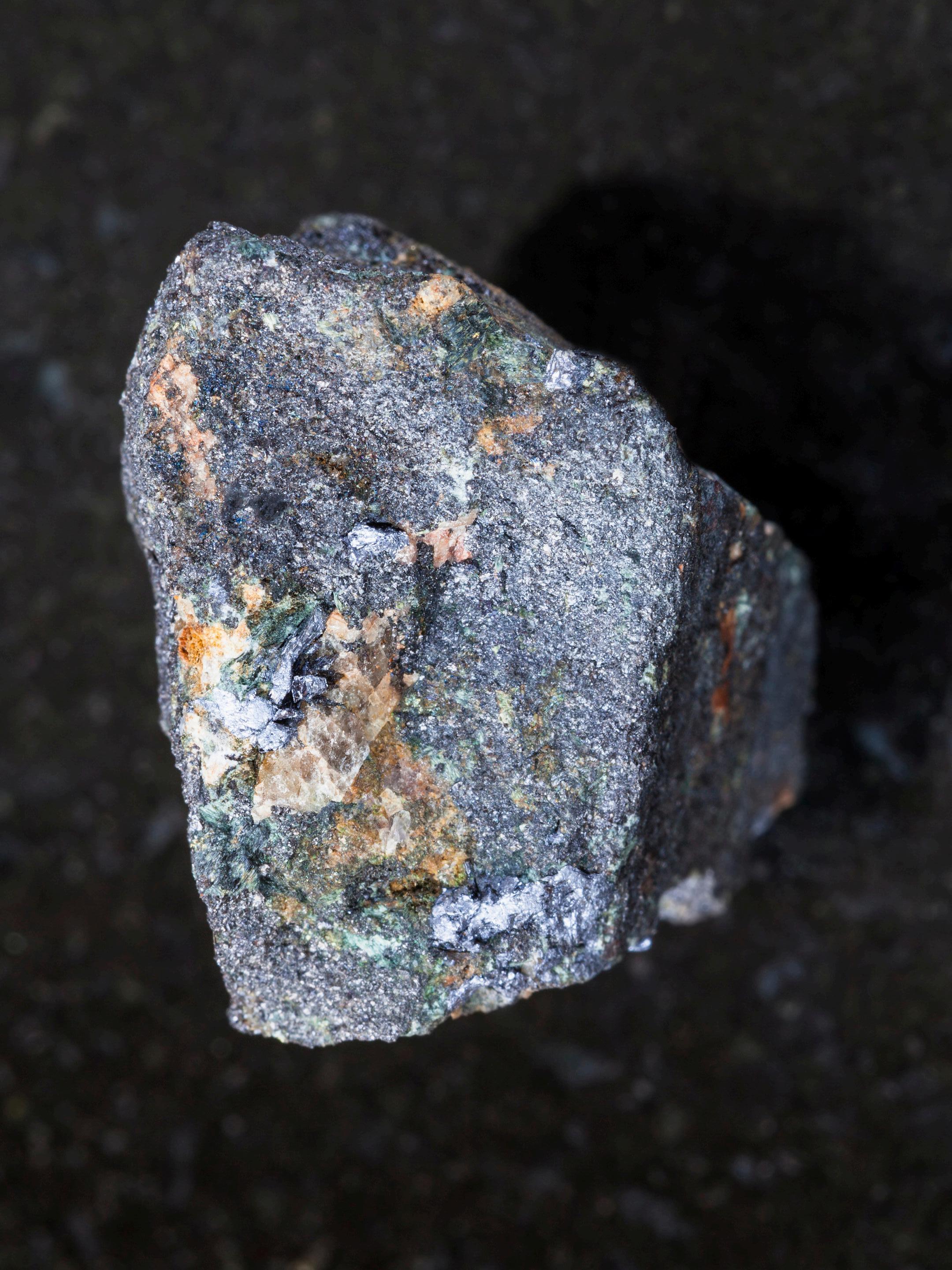

Dr MeganJackson,aco-author ofthepaperandanassistant professorintheDepartmentof Chemistry

KennethOrtizChua,acoauthorofthepaperandPhD student

Theresearchreveals thatstepedgedefects insemiconducting MoTe₂significantly altertheelectronic structureofthe surroundingmaterial, influencingcatalytic activityupto200 nanometersaway
Dr Jackson’s team sought to test this hypothesis using a different TMDC, MoTe₂, in both its semiconducting and semimetallic phases By employing cutting-edge techniques, such as scanning electrochemical cell microscopy, atomic force microscopy and Kelvin probe force microscopy, they were able to map catalytic activity and electronic properties at the nanoscale
The study’s findings challenge the conventional wisdom that edge sites are simply undercoordinated regions with favorable hydrogen adsorption energies Instead, the researchers discovered that in semiconducting MoTe₂, edge sites act as defect regions that perturb the electronic structure of the surrounding basal plane. This effect extends over distances of 50 to 200 nanometers, far beyond the edge itself.
“Our work shows that edge sites in semiconductor electrocatalysts should not only be thought of as catalytically active undercoordinated sites but also as defect sites that can dramatically tune the electronics of the surrounding region,” said Dr. Jackson. “This ability to modify nanoscale electronic structure with undercoordinated defect sites presents a powerful opportunity for the bottom-up design of semiconducting electrocatalysts ”
Interestingly, the same phenomenon was not observed in the semimetallic phase of MoTe₂ In this phase, there was no measurable difference in catalytic activity between edge and basal plane sites. This contrast underscores the importance of electronic structure in determining catalytic behavior.
The researchers found that the local catalytic activity in MoTe₂ strongly correlated with electronic properties such as surface potential, conductance and rates of electron transfer Measurements using KPFM and conductive AFM revealed a higher density of states at the Fermi level near edge sites and their surrounding regions. This higher density of states facilitates faster electron transfer, a key factor in catalytic efficiency
Moreover, the study indicates that basal plane sites near the edge may exhibit stronger hydrogen adsorption than those farther away, effectively creating a gradient of catalytic activity extending away from the edge.
These insights have profound implications for the design of next-generation electrocatalysts By rethinking edge sites as defect regions that modulate the electronic structure of their surroundings, researchers can explore new strategies for enhancing catalytic performance For example, intentionally introducing or engineering defects in semiconducting materials could enable precise control over local electronic properties, optimizing the material for specific reactions.
“Thinking of defects in this way provides an exciting opportunity to rationally tune local electronic structures in semiconducting electrocatalysts,” said Chua “This approach could be applied to a wide range of reactions, from hydrogen evolution to carbon dioxide reduction.”

UNC Study Uncovers Key Chemical Signal Behind Devastating Crop Disease
In the fight against plant diseases that devastate global food crops, understanding the mechanisms of bacterial virulence is critical A UNC study published in Molecular Plant-Microbe Interactions, sheds light on how Pseudomonas syringae, a common bacterial pathogen responsible for diseases in crops across the globe, uses a chemical signal to bolster its virulence and survival
Co-authored by Dr Bo Li, a professor in the Department of Chemistry, postdoc fellow Qiang Guo and graduate students Caitlin Vitro and Drake Crawford, the research, “A Diazeniumdiolate Signal in Pseudomonas syringae Upregulates Virulence Factors and Promotes Survival in Plants,” characterizes a diazeniumdiolate-based molecule, leudiazen, which is a key player in the bacterium’s ability to infect and thrive within plant hosts.
With over 50 identified pathovars, P syringae poses a significant threat to agriculture worldwide This bacterium infects a wide range of crops, from tomatoes to kiwifruit, causing diseases that lead to massive economic losses For example, the kiwifruit canker outbreak in Europe and New Zealand in the early 2010s devastated orchards, underscoring the need for effective management strategies
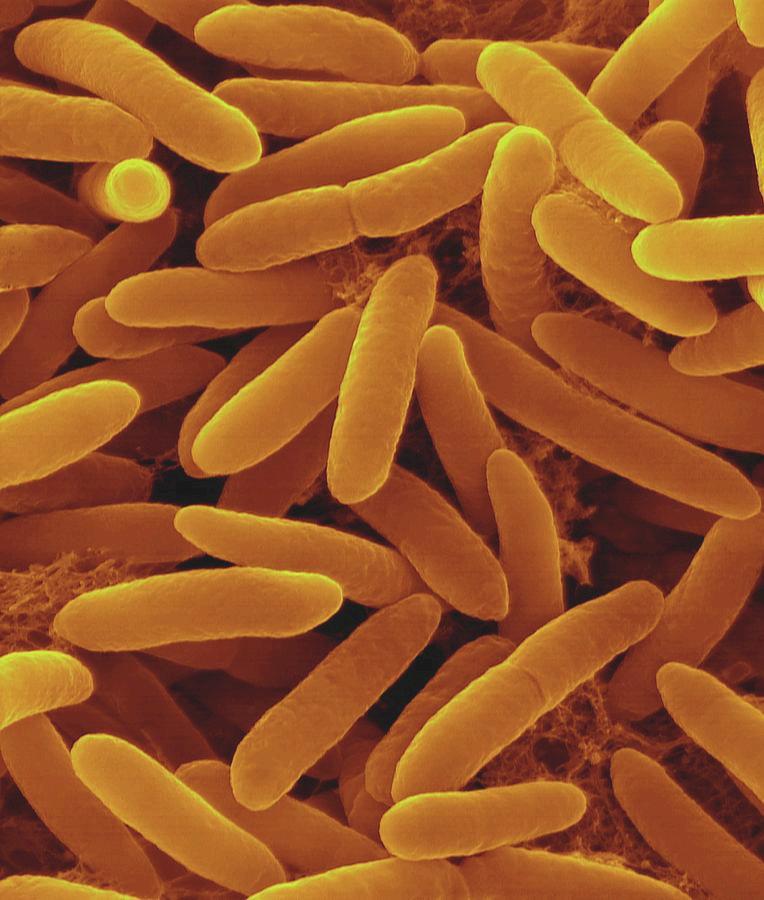
Researchers uncovered how Pseudomonas syringae, a common bacterial pathogen responsible for diseases in crops across the globe, uses a chemical signal to bolster its virulence and survival
Tomatoleavesafter10daysofinfectionwith wildtype(WT)PssUMAF0158orΔmgomutants
A specific strain, Pseudomonas syringae pv syringae (Pss) UMAF0158, is known for producing mangotoxin, a substance that disrupts plant metabolism While the chemical structure of mangotoxin remains elusive, production of this toxin is controlled by a signaling molecule called leudiazen, which plays a critical role in the bacterium’s ability to infect plants Leudiazen is made by the protein products of a group of genes called the mangotoxin-generating operon (mgo) in the same bacterium
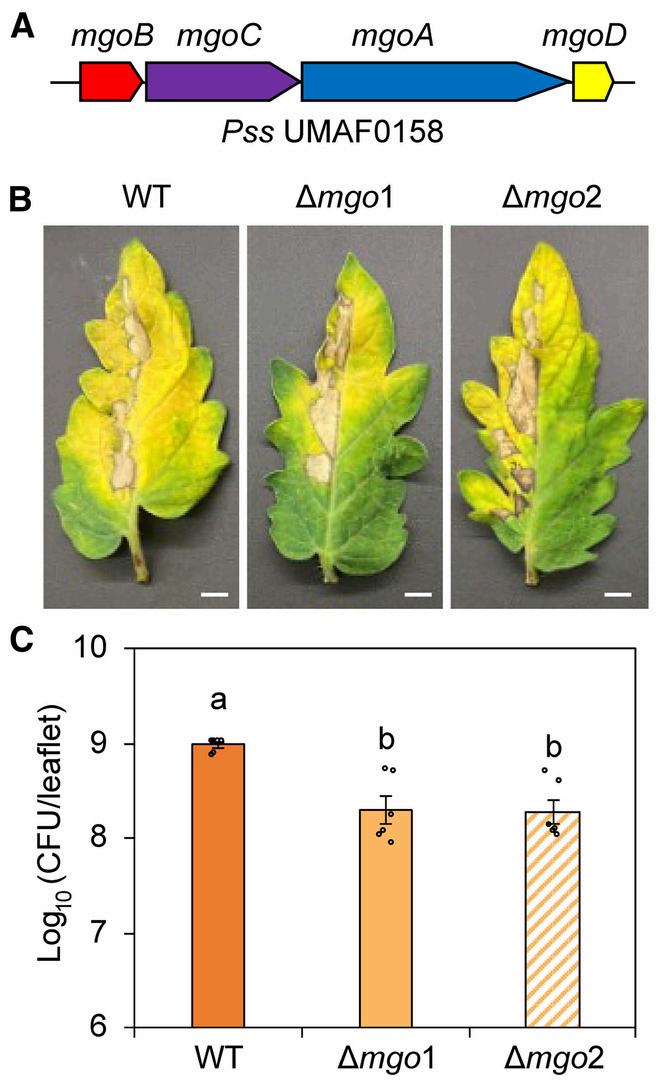
The research made several key insights:
1.Gene Deletion Reduces Disease Symptoms: When scientists deleted the mgo genes in Pss UMAF0158, the bacterium caused less damage to tomato plants This finding suggests that mgo is essential for the bacterium’s virulence
2 Leudiazen Restores Activity: In mutant bacteria lacking mgo, adding leudiazen restored their ability to produce mangotoxin This result shows that leudiazen is a powerful signal for bacterial virulence, effective at extremely low concentrations
3 Survival and Spread: The mgo genes also help the bacteria survive within plants Without these genes, the bacterial population in infected plants dropped significantly
4.New Gene Cluster Identified: The study discovered a group of genes (RS17235–RS17245) that are regulated by mgo. These genes help the bacteria survive inside plants and are found in many strains of P syringae
“Understanding how P syringae uses mgo and leudiazen to regulate plant infection opens new doors for controlling bacterial diseases,” said Dr Li “By targeting these genes or the signaling pathway, we could develop treatments to protect crops without relying on traditional pesticides.”
Leudiazen contains two key features: a diazeniumdiolate group and an isobutyl side chain. Both are essential for its signaling power This molecule acts like a messenger When there is a large enough bacterial population, it tells the bacterium to activate genes that produce toxins and other factors needed to infect plants
The mgo system is not unique to Pss UMAF0158 Similar gene clusters exist in other bacteria, where they regulate various behaviors, including toxin production and disease suppression This suggests that the findings could apply to a wide range of bacteria, helping researchers understand how microbes interact with their environments

Dr BoLi,aprofessorinthe DepartmentofChemistry,isa co-authorofthestudy
The study raises several questions: How does the bacterium sense leudiazen? How do other bacteria use mgo-like signaling systems? Can disrupting these signals prevent infections?
“By answering these questions, we hope to turn this knowledge into practical solutions for agriculture,” said Dr Li “The ultimate goal is to protect crops and ensure food security in a world facing increasing challenges from plant diseases ”
Electrochemist tracks protons and electrons to improve alternative fuel production
UNC-Chapel Hill Chemistry student Charlotte Montgomery investigates the smallest details, and that’s no exaggeration: the electrochemist tracks the movements of protons and electrons trillions of times smaller than a grain of sand to advance sustainable energy technology For her contributions to the field, Montgomery was one of four students recognized with the Francis Preston Venable Chemistry Scholarship
As a member of the Dempsey Group, Montgomery investigates how molecular catalysts precisely move protons and electrons to drive chemical reactions and produce alternative fuels As these catalysts mediate electrochemical transformations, protons and electrons migrate from earth abundant feedstocks, like water to the catalyst and form fuels like hydrogen gas Identifying the pathway and measuring the rate of these transfers is crucial to determine how efficiently the desired fuel is formed If Montgomery and others can better understand the proton and electrons’ movements, they can better tune the catalysts’ structures to produce the desired fuel more efficiently

“Compared to traditional material catalysts, molecular catalysts that mediate electrochemical reactions offer new avenues for understanding what’s really going on at an atomic level,” said Montgomery “That’s key for understanding why catalysts break down or participate in nonproductive reactions, and we can use that information to further improve catalyst performance ”
Montgomery, the study’s lead author, weighs the catalyst in an air-free glovebox
To achieve this, Montgomery and coworkers have measured the rate of the proton-coupled electron transfer of catalysts anchored to a surface By tracking how quickly protons moved through the catalyst in different conditions, the chemists could calculate the proton transfer’s rate ten thousand times faster than the blink of an eye With rising global CO2 levels, this new analytical method comes at a critical time in alternative fuel development and could expedite the path to more efficient catalytic technologies
“Charlotte has pushed forward our understanding of how proton transfers to metal centers are not simply dictated by thermodynamics, but also by the kinetic barriers associated with these elementary reaction steps She’s mapped out how transition metal complexes take circuitous, multi-step routes to avoid individual steps with high kinetic barriers, no matter how much driving force there is. This understanding is providing a blueprint for catalyst design,” said Dr. Jillian Dempsey, Bowman and Gordon Gray Distinguished Term Professor and Deputy Director of the Center for Hybrid Approaches in Solar Energy to Liquid Fuels “Furthermore, she’s the first person to quantify a rate constant for a proton-coupled electron transfer reaction of a surface immobilized complex using cyclic voltammetry, a critical advance for realizing integrated catalyst systems!”


Dr JillianDempsey,leaderof theDempseyGroup CharlotteMontgomery, recipientoftheFrancis PrestonVenableChemistry Scholarship

Electrochemicalcell architecturetostudy thetwo-electron,oneprotonPCETkineticsof metalhydrideformation forelectrodeimmobilizedcobalt complex(takenfrom ACSElectrochem 2025,1,3,303–314)

ParticipantsofIndustryInSight2024gatheredforaphoto
Outside of the laboratory, Montgomery connected UNC students with industry leaders as a member of the Graduate Committee for Professional Development (GCPD) and an organizer of Chemistry’s annual Industry InSight The event’s year-long planning process culminated in a day of presentations, workshops, and networking that fostered new relationships for her peers. For her work advancing these technologies and connecting the chemistry community, Montgomery was recognized with the Francis Preston Venable Chemistry Scholarship
“Working with the supportive community at UNC, including the GCPD, has filled my cup in ways I didn’t know were possible,” said Montgomery “These past five years have driven home the importance of a supportive community for developing creative solutions to our global challenges Looking back, I see how understanding the smallest details, from proton transfers to smiling at people in the hallways, can cultivate the innovation and community we need to impact our world ”

DepartmentofChemistry
UniversityofNorthCarolinaatChapelHill
125 South Rd.
CB #3290
Chapel Hill, NC 27599
chemistry@unc.edu 919-843-7100
Give the Gift of Education!

chem.unc.edu/give
Your gifts to the Chemistry Department provide so many wonderful opportunities to our students and faculty. With your help, we can bring in the new year with the support needed for an exciting future ahead. To make a gift today, you may use your phone or tablet camera to scan the QR code or visit chem.unc.edu/home/give/. We thank you in advance for your support of chemistry at UNC!

